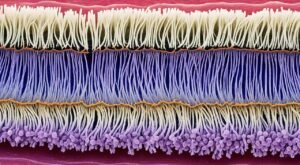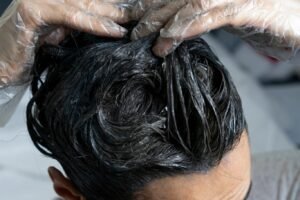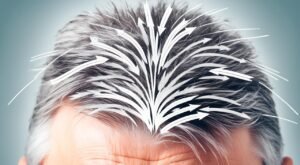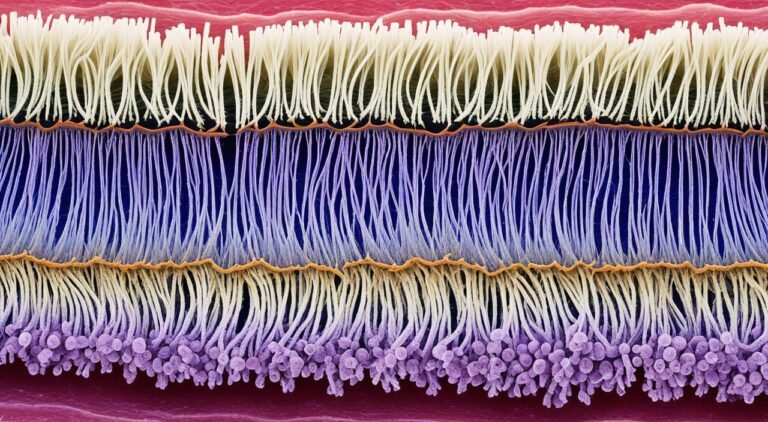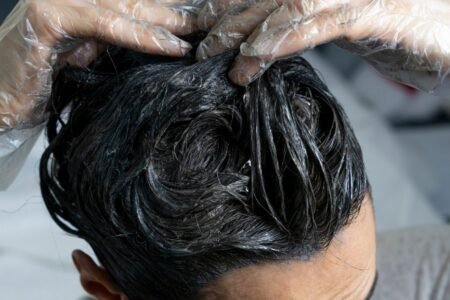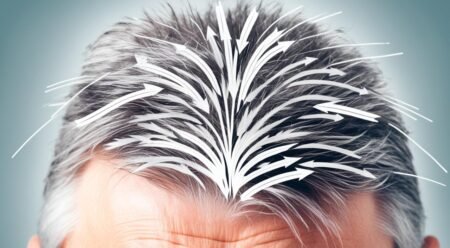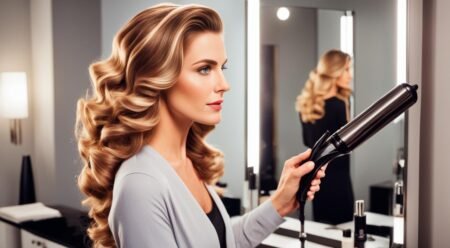What makes our hair grow, and why does it behave the way it does? The science behind hair anatomy is fascinating and intricate, revealing much more than what meets the eye. Did you know that a healthy adult might lose about 70 to 100 hairs from their head each day? Understanding hair structure, starting from the hair follicles to the visible hair shaft, can help us appreciate the complex processes behind our daily grooming routines.
Human hair is primarily composed of the protein keratin, which is also found in our nails and skin. Each strand of hair structure originates from a root embedded in the hair follicle, situated within the dermis layer of our skin. The biology of hair is beautifully straightforward yet complex. While hair follicles nurture and grow our strands, the hair shafts display unique qualities such as strength, color, and texture, owing much to their layered composition of the medulla, cortex, and cuticle.
Interestingly, about 30 percent of a woman’s body surface is covered with terminal hair compared to around 90 percent in men. Each strand of hair we see conceals a story of growth and nourishment, with sebaceous glands nearby releasing sebum to protect and moisturize. Furthermore, the hair protein keratin is assembled through amino acids derived from our diet, fortifying every strand for the daily wear and tear we subject it to.
Key Takeaways
- Human hair is primarily made of the protein keratin, also found in nails and skin.
- Each hair strand originates from a root in the hair follicle, situated in the dermis layer of the skin.
- Hair follicles and hair shafts have distinct roles in hair composition, contributing to its growth and strength.
- Our bodies produce sebum, a natural oil that helps protect and moisturize hair.
- The visible hair shaft comprises three layers: the medulla, the cortex, and the cuticle, each contributing unique qualities.
- A healthy adult may lose about 70 to 100 hairs from their head each day.
As we delve into the detailed study of hair anatomy and hair structure, we uncover the intricate processes that sustain the brilliance and health of our strands. Stay tuned to learn about keratin’s vital role and the journey of amino acids transforming into the keratin that solidifies our hair, skin, and nails.
The Basic Composition of Hair
Understanding the basic composition of hair allows us to appreciate its intricate structure and the biochemical processes that contribute to its resilience and beauty. Let’s delve into how specific molecules play crucial roles in the hair fibers.
The Role of Keratin in Hair
Keratin is the essential protein forming the bulk of our hair fibers, accounting for approximately 95% of its composition. Produced by keratinocytes, this protein is rich in the amino acid cysteine, which forms robust disulfide bridges. These bridges are critical as they provide the hair with its strength and resilience, a topic well-documented by Mercer (1953) in his exploration of keratin fiber heterogeneity. The helical shape of keratin greatly influences the elasticity and durability of our hair, as researched by Fraser et al. (1986) on alpha-keratins.
Why Proteins Are Essential
Proteins are indispensable for the integrity of the hair structure. Synthesized from amino acids like proline, threonine, leucine, and arginine, these proteins contribute to the hair’s elasticity and resistance. Studies such as Briki et al. (2000) highlight how biological tissues, including hair, are examined at various scales to understand these molecular interactions. The incorporation of amino acids into the hair structure ensures that the hair maintains its flexibility and robustness, crucial for healthy hair fibers.
Other Important Hair Molecules
Beyond keratin, other molecules play vital roles in hair composition. Melanocytes within the cortex layer are responsible for injecting pigment, shaping the hair’s color from its inception to when it eventually sheds. Additionally, Ohta et al. (2005) analyzed the cell membrane complex of hair fibers, revealing how lipids contribute to hair health. Kreplak et al. (2001a) also noted the differences in lipid profiles between Caucasian and Afro-American hair, emphasizing the diversity in hair composition across ethnic groups. These findings underscore the importance of various molecules in maintaining the overall health and appearance of our hair.
- Keratin produced by keratinocytes is rich in cysteine, forming strong disulfide bridges.
- Essential proteins synthesized from amino acids provide elasticity and resistance.
- Lipids and pigments play critical roles in hair integrity and color.
The Anatomy of Hair Structures
Delving into the intricate details of hair anatomy, we find a complex structure that extends deep within our skin. Hair follicles are the birthplaces of individual hairs, embedded in the dermis and enriched with essential nutrients supplied by nearby blood vessels. The sebaceous glands, located adjacent to these follicles, play a pivotal role in maintaining healthy hair by releasing sebum, an oily substance responsible for keeping our scalp and hair hydrated.
Understanding Hair Follicles
The foundation of hair growth originates in the hair follicles, which can be found deep within the skin’s layers. A typical hair follicle is a tubular cavity, featuring a hair bulb at its base where active cell division occurs to produce new hair cells. This cellular activity is supported by a rich network of blood vessels that ensure continuous nourishment and oxygen supply, crucial for the ongoing hair growth process. A remarkable fact is that about 90 percent of a person’s hair is consistently in the growth phase, also known as the anagen phase, at any given time.
What Makes Up the Hair Shaft
The hair shaft itself is an intricate combination of multiple layers, each contributing to its unique properties. The innermost core, the medulla, is present in thicker hair types and consists of a transparent core of cells and small air spaces. Surrounding the medulla is the cortex, which makes up the bulk of the hair shaft components and contains keratin filaments providing strength and flexibility. The outermost layer, the cuticle, consists of overlapping cells that form a protective lipid-rich barrier, ensuring the hair’s durability and resilience against external elements.
The Role of Sebaceous Glands
Sebaceous glands are integral to maintaining the health and appearance of our hair. Positioned adjacent to hair follicles, these glands produce lipid-rich sebum that coats the hair shaft and scalp. This natural oil not only provides essential moisture but also forms a protective layer that guards against environmental damage and dehydration. The balance of sebum production is critical; both excessive and insufficient sebum can lead to hair and scalp issues, emphasizing the importance of these glands in our overall hair follicle anatomy.
In conclusion, understanding the hair follicle anatomy, including the vital roles of sebaceous glands and the structural components of the hair shaft, is essential in comprehending how our hair grows and thrives. Such knowledge enables us to better care for our hair, ensuring it remains vibrant and healthy throughout its lifecycle.
Types of Hair and Their Unique Characteristics
Understanding the diverse nature of hair texture and hair type is crucial for proper hair care and management. Hair across the human body presents itself in various forms, ranging from vellus hair, often referred to as peach fuzz, to the more pronounced terminal hair that is particularly noticed on the head, face, and other prominent regions. Each type of hair, whether it is the subtle vellus hair or the thicker terminal hair, has its distinct attributes and growth patterns.
Hair can be divided into different types, each influenced by various factors like genetics, hormones, and age. Vellus hair, the fine, wispy hair that covers most of our body, serves a protective purpose, whereas terminal hair, known for its thickness and pigment, emerges prominently in areas such as the scalp, eyebrows, and beard.
The texture and type of hair, including curly hair and straight hair, are often determined by the shape of the hair follicles. Round follicles typically produce straight hair, while oval or asymmetrical follicles result in curly hair. This structural difference underlies the unique properties of straight, wavy, and curly hair types.
Based on curl patterns, hair types are categorized as:
- Type 1: Straight Hair
- Type 2: Wavy Hair
- Type 3: Curly Hair
- Type 4: Coily Hair
Each main hair type can be divided into subcategories, offering a closer look at specific hair characteristics:
| Hair Type | Subtypes | Description |
|---|---|---|
| Straight Hair (Type 1) | 1a, 1b, 1c | 1a: Very straight, fine hair; 1b: Straight with some volume; 1c: Straight with body and slight bends |
| Wavy Hair (Type 2) | 2a, 2b, 2c | 2a: Loose waves; 2b: Waves with defined S-shape; 2c: Defined waves prone to frizz |
| Curly Hair (Type 3) | 3a, 3b, 3c | 3a: Big, loose spiral curls; 3b: Tighter curls; 3c: Very tight, corkscrew curls |
| Coily Hair (Type 4) | 4a, 4b, 4c | 4a: Soft, defined curls; 4b: Z-shaped curls, often less defined; 4c: Tightest, most fragile coils |
It’s essential to recognize the characteristics of our hair texture and hair type to adopt appropriate hair care practices. For instance, curly and coily hair types tend to be more prone to dryness and damage, requiring significant moisture and gentle handling. On the other hand, straight hair, although easier to manage, may be challenging to style due to its sleekness.
Moreover, body hair, encompassing both vellus and terminal varieties, grows at different rates and is influenced by various personal factors, including hormonal changes. Understanding the distinctive properties and needs of our head hair and body hair can lead to healthier and more manageable hair in the long run.
The Layers of a Hair Strand
When we delve into the anatomy of a hair strand, it becomes clear how intricately it supports hair strength and health. Each hair strand is a masterpiece of protein structure, primarily composed of keratin—also found in nails, hoofs, feathers, and claws. Keratin’s configuration in hair strands is maintained by strong disulfide bonds and numerous yet weaker hydrogen bonds, adding to the robustness and flexibility of our hair strands.
The Cuticle: The Protective Outer Layer
The cuticle is the hair’s outermost layer, serving as a resilient shield. Composed of overlapping cells, this layer is crucial for protecting the hair cortex and providing the characteristic shine. The health of the cuticle is directly linked to hair strength and overall hair health. Proper care and maintenance of the cuticle ensure the vitality of hair, preventing damage from external factors.
The Cortex: The Core of Hair Strength
Just beneath the cuticle lies the cortex—the powerhouse of the hair strand. This layer comprises long keratin filaments, which give the hair its strength, elasticity, and color. The cortex is held together by disulfide and hydrogen bonds, balancing durability and flexibility. Melanin pigments reside within the cortex, determining the natural color of our hair. Studies such as those by Howell et al. (2000) suggest that the composition of this layer can even offer health insights.
The Medulla: The Inner Core
At the very heart of the hair strand, we find the medulla. This central core exists predominantly in thicker hair types and consists of transparent cells and air spaces. While not all hair types have a medulla, its presence contributes to the overall bulk and structure of thicker hair. The medulla’s soft texture contrasts with the more structured and dense cortex, emphasizing the diverse characteristics within each strand of hair.
Understanding these layers—the cuticle, cortex, and medulla—underscores the complexity of our hair and its remarkable protein structure. Each component plays a vital role in maintaining the overall strength, health, and functionality of our hair strands.
